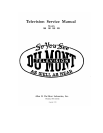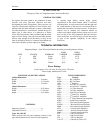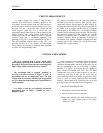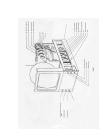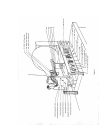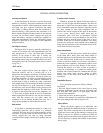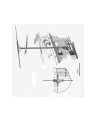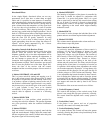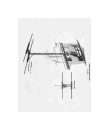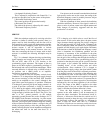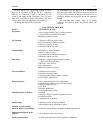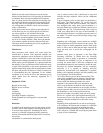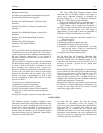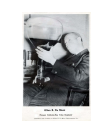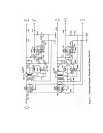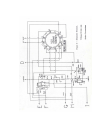
Du Mont 4
CIRCUIT ARRANGEMENT
A simple straight line layout is used in these
receivers that should prove extremely helpful to the
serviceman. Viewed from the front, the video receiver is
on the left side of the chassis and the sound receiver is on
the right. Fig. No. 1 shows the front controls and the
sound receiver while Fig. No. 2 shows the rear
adjustments and the video receiver. The top portion of the
chassis contains both sweep circuits along with the
modulating circuit of the cathode-ray tube. To prevent
confusion each side is considered separately, half
appearing in Fig. No. 1 and the remainder in Fig. No. 2.
The seven auxiliary controls shown in Fig. No. 2 are
provided for the use of the installer and serviceman.
These controls are necessary to make the final alignment
of picture size and positioning when
the receiver is installed under the operating conditions
imposed by the .earth’s magnetic field. and the power
supply line voltages. Once properly set these controls do
not need adjustment and since they. were not provided for
the owner’s use we suggest that the dealer or serviceman
seal the back of the cabinet as it is not possible to tamper
with the controls when the back is in place. The use of the
parts and tubes shown in Fig. No, 1 and Fig. No. 2 can be
checked by comparing the "V” numbers, etc., with the
schematic drawings which are furnished in the back of
this manual. Four separate schematic drawings have been
provided which, due to their size, will be found more
readable than a single drawing.
CAUTION AND WARNING
The set is equipped with a safety switch which
automatically opens upon the removal of the back of
the cabinet. This protects the operator from dangerous
high voltages which would otherwise be exposed.
The serviceman that is engaged installing or
servicing television receivers is urged to take all
precautions and run no unnecessary risks. The high
voltages that are necessary with this type of equipment
are very dangerous and should not be approached in a
careless manner.
It is better to shut the set completely off between
adjustments than to suffer a painful or even a
dangerous burn.
Large cathode-ray tubes operate at high-voltages and
hence are evacuated to a very high degree of vacuum.
Therefore the atmospheric pressure on the glass can run
into tons depending on the size of the tube. A collapse
therefore is as bad as an explosion and all cathode-ray
tubes should be handled with care. The Du Mont
Laboratories have gone to great expense to provide a
cathode-ray tube that is safe for the home and the
structural design results in its ability to stand tests nearly
twice as severe as usually employed. The serviceman,
however, should observe the following rules as he will
probably be the only one to handle the average tube.
1. Be careful in handling the tube.
2. Watch the use of tools near the tube.
3. Don't scratch the surface of the glass.
4. Don’t stand the tube on a metal surface or in any
other way cause certain parts to be quickly
heated or cooled.



